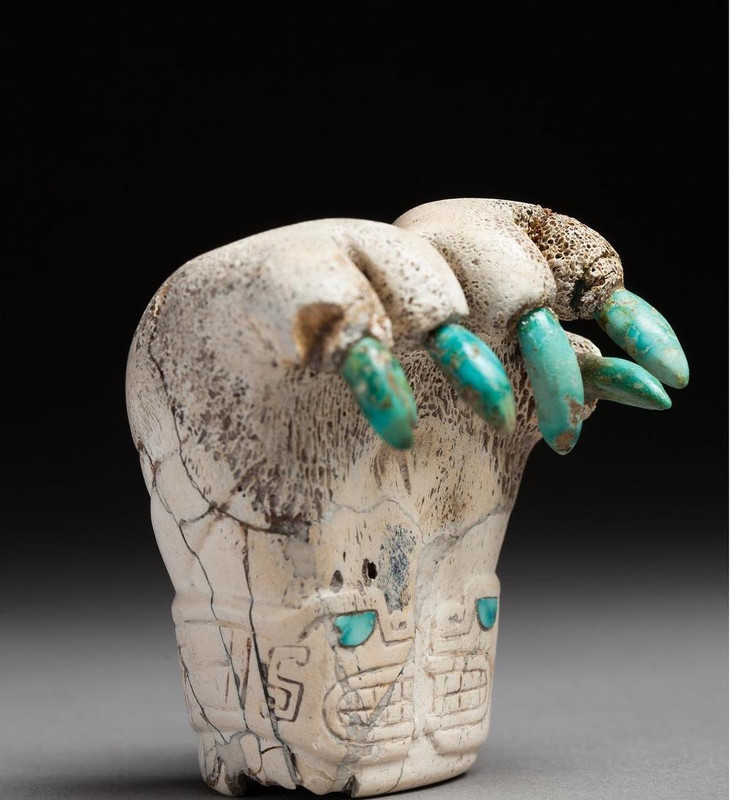The jaguar claw scepter, a remarkable artifact from the Chavin culture in Peru dating from 1200 BC to 200 BC, is carved from the elbow bone of a human and shaped like a jaguar claw. Adorned with turquoise inlays and a relief depicting a two-headed serpent, this scepter serves not only as a decorative object but also as a powerful symbol of authority and the connection between the natural and supernatural worlds.

The jaguar claw represents strength and power, while the turquoise symbolizes the celestial sphere. The imagery of the two-headed serpent is associated with high rank and holds significant meaning in the Chavin worldview. These two-headed creatures are seen as pathways connecting the earth to the sky.

The scepter is not merely an object for those in power; it embodies the connection between humanity and cosmic forces. The integration of natural and spiritual elements in its design reflects a complex belief system and reverence for powerful animals like the jaguar.

In summary, the jaguar claw scepter is a valuable cultural legacy that helps us gain insight into the worldview and social structure of the ancient Chavin civilization.
